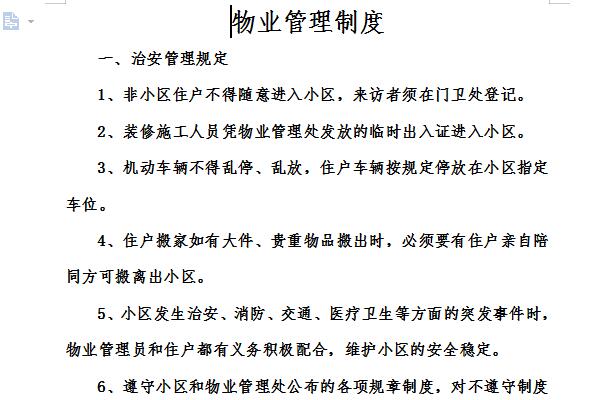
Classification of property management system forms
Residential property: refers to buildings with residential functions for people to live in; including residential communities, single residential buildings, apartments, villas, resorts, etc.; of course, it also includes supporting shared facilities, Equipment and public areas. Commercial properties: Sometimes also called investment properties, they refer to properties that can obtain sustained growth returns or continue to appreciate through operation. Such properties can be roughly divided into commercial properties and office properties.
Commercial service properties refer to various construction sites for commercial and service industries, including shopping plazas, department stores, supermarkets, specialty stores, chain stores, guesthouses, hotels, warehousing, leisure and entertainment venues, etc. Office property is a place where managers (white-collar workers) engaged in production, operation, consulting, service and other industries work. It belongs to the category of production and operation materials. This type of property can be divided into traditional office buildings, modern office buildings and intelligent office buildings according to the development and change process; according to the grade of office building properties, it can be divided into Grade A office buildings, Grade B office buildings and Grade C office buildings.
Property management system content classification
(1) The principle of clear rights and responsibilities: Within the property management area, the rights and responsibilities of owners, owners’ conferences, owners committees, and property management companies should be very clear, and the rights and responsibilities of each department of the property management company should be clear. All owners within a property management area form an owners' conference, and the owners' committee is the executive body of the owners' conference. The property rights of the property are the basis of the property management rights. The owners, the owners' conference or the owners committee are the main body of the property management rights and are the core of the property management rights.
(2) Owner-led principle: Owner-led means that in property management activities, the needs of the owners are the core and the owners are given priority. Emphasizing owner-ledness is the fundamental difference between modern property management and housing management under the traditional system.
(3) Service first principle: Every job done is a service, and property management must adhere to the service first principle.
(4) Unified management principle: Only one owners' meeting can be established in one property management area, and one property management enterprise shall implement property management in one property management area.
(5) Principle of professionalism and efficiency: The unified management of property management companies does not mean that all work must be undertaken by the property management companies themselves. The property management companies can entrust special services within the property management area to professional service companies. However, all property management in the area shall not be entrusted to others.
The editor recommends:
The property management system is a free template. You can download the source file for you to edit, modify and replace. Huajun Software Park also providesFire safety management system template,Laboratory safety management systemdownload.






































it works
it works
it works